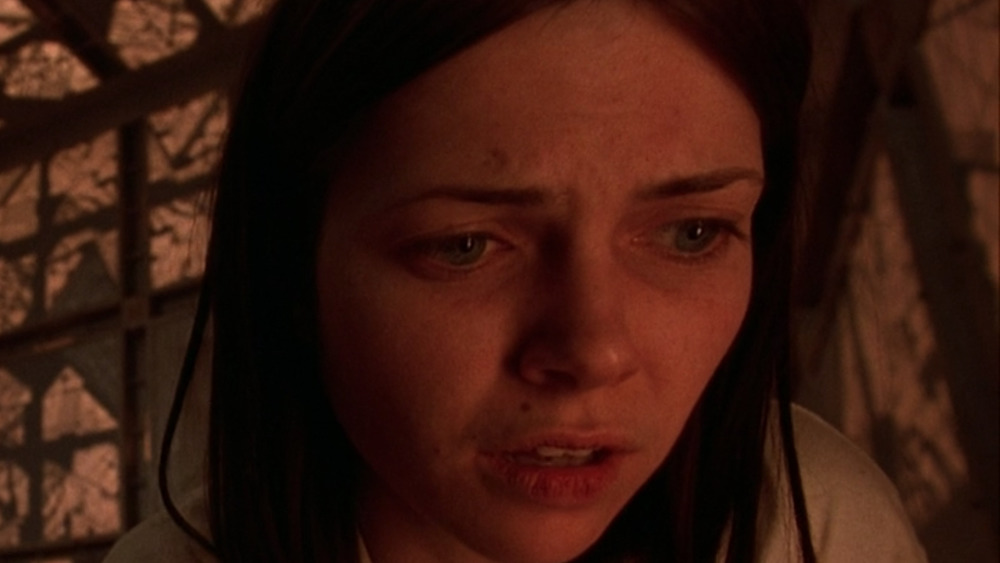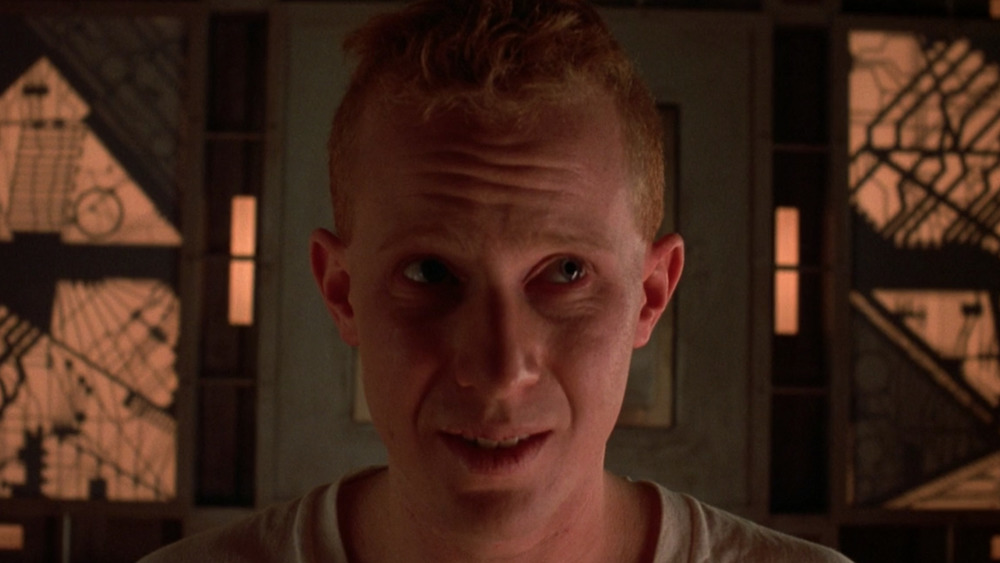In 1997, the Canadian science fiction thriller Cube emerged as a unique and daring film that defied expectations for low-budget cinema. Opening in only sixteen theaters with a modest budget of $350,000, the film initially earned just $500,000, a return that might have seemed disappointing. However, the movie quickly gained attention through word-of-mouth and intellectual curiosity, eventually achieving cult status.
Its popularity grew internationally, leading to a wider release and substantial financial success over time. The acclaim and intrigue generated by the original film were enough to inspire a sequel, Hypercube, and a prequel, Cube Zero. What set Cube apart from other science fiction thrillers was its ability to combine minimalistic sets, suspense, and intellectual puzzles, creating a lasting impression that continues to captivate audiences.
Cube introduces a group of strangers who wake up in a mysterious series of cubic rooms. Each room is almost identical in shape and size, with a door on every side leading to another chamber. The interiors are stark, featureless, and bathed in colored lights, giving each room a slightly different appearance without altering the uniformity of the Cube. The characters have no memory of how they arrived or why they are there, which immediately establishes an atmosphere of confusion and tension.
As they explore, it becomes clear that the rooms contain hidden dangers, and the captives must discover ways to survive and escape. The film’s minimalist approach highlights both the physical and psychological aspects of imprisonment, emphasizing human reactions under extreme pressure and leaving viewers to ponder the meaning of the structure they are trapped in.
The Cube quickly establishes its threat with the introduction of lethal traps. In the opening sequence, a man is killed by a slicing mechanism, immediately demonstrating the danger of the environment. As the main characters proceed through the rooms, they encounter flamethrowers, spikes, and corrosive acid hidden in some chambers. Survival requires vigilance, ingenuity, and constant adaptation.
Rennes, a pragmatic and resourceful member of the group, attempts to devise a simple method for testing rooms by tossing boots ahead to detect traps. While initially effective, the method fails when Rennes himself becomes a victim of a hidden trap. This incident illustrates the unpredictable nature of the Cube and the limitations of relying solely on instinct or trial and error. The constant threat of death creates an environment of extreme tension and forces the characters to rely on both mental acuity and cooperation, although both prove fragile under pressure.

Mathematics, Logic, and Human Fear Shape Survival Amid the Cube’s Deadly Chaos
As the characters struggle to survive, they discover that brute force and caution alone are insufficient. Leaven, a mathematics student, observes numerical codes etched on the doors of each room. She deduces that these numbers indicate whether a room contains a trap, with prime-numbered rooms being lethal. This realization transforms the approach to survival. Math becomes the central tool for moving through the Cube, allowing the characters to predict danger and make informed decisions.
The discovery of a systematic method introduces a sense of order into the chaos, offering hope that the Cube can be understood and potentially conquered. However, the film continues to maintain a sense of ambiguity, as the larger purpose and design of the Cube remain unclear. This intersection of intellectual problem-solving with life-or-death stakes defines the film’s unique appeal.
Despite the newfound logic provided by Leaven, fear and paranoia begin to dominate the group. Humans struggle to accept randomness, and the absence of a clear controlling force within the Cube exacerbates tension. Quentin, a volatile and impulsive character, becomes increasingly paranoid, believing the Cube exists as part of a sadistic experiment.
When Worth, a member of the group, reveals he helped design the Cube’s outer shell, suspicion intensifies. Quentin interprets this as evidence of conspiracy and begins exerting control over the group through violence. The psychological breakdown of the characters illustrates one of the film’s key themes: in an environment of chaos, people often turn on each other rather than confronting the true source of danger. Fear and mistrust emerge as more lethal than the Cube itself.
Beneath its surface as a suspenseful thriller, Cube carries a metaphorical message about human nature and societal structures. The Cube represents systems that are vast, impersonal, and often incomprehensible. Worth explains that no one truly controls the Cube and that it functions without oversight, highlighting humanity’s tendency to construct machines or institutions whose operations are beyond individual understanding.
Each character possesses knowledge that could contribute to understanding the whole, yet the inability to collaborate fully leads to destruction. The Cube becomes a symbol of human inefficiency, ego, and the dangers of attempting to impose order on a system too complex to control. The film’s philosophical undertone emphasizes that the real threat often lies within human behavior rather than external circumstances.

The Cube Forces Characters to Confront Meaninglessness, Conflict, and Survival Through Chaos
The Cube challenges the assumption that every complex creation has a purpose. Worth suggests that the structure exists simply because no one dared to halt its construction, implying that its existence is fundamentally meaningless. Quentin initially struggles with this logic, seeking reason in a system that appears chaotic.
The film argues that sometimes the absence of purpose is itself a defining characteristic. This idea resonates throughout the narrative, influencing character behavior and heightening existential tension. The Cube’s lack of overarching purpose forces the characters to confront their own limitations, fears, and ethical choices, framing the story as both a survival thriller and a meditation on the absurdity of human systems.
As stress, hunger, and fear intensify, the group’s cohesion deteriorates. Quentin emerges as a dominant threat, killing Holloway and turning on Worth and others. The characters’ interactions become as deadly as the Cube itself, emphasizing the idea that human conflict can surpass structural hazards. The reliance on numerical analysis and logic temporarily restrains chaos, but ultimately, human emotions and mistrust dominate. The struggle to survive transforms from a test of intellect to a confrontation with human nature, demonstrating that collaboration is often undermined by suspicion and fear.
Leaven continues her mathematical analysis, realizing the rooms shift and move, meaning their position is not fixed. By applying Cartesian coordinates, she maps their location and potential path to the Cube’s edge. Kazan, an autistic savant, contributes by rapidly factoring complex numbers to identify safe rooms.
Together, they interpret the Cube’s numerical language and determine safe routes. This combination of intellect and calculation allows the survivors to approach a potential exit. However, the realization comes with irony. The Cube’s exit had been accessible near their starting point, hidden by the shifting layout, reinforcing the film’s theme that human effort is often caught in an indifferent and unpredictable system.
In the climax, the remaining characters reach the final sunlit room. Quentin intervenes, killing Leaven and wounding Worth before attempting to escape. Worth sacrifices himself to prevent Quentin from leaving, who is crushed by the Cube’s shifting rooms. Only Kazan survives, stepping into the daylight. He cannot explain the Cube’s inner workings, meaning the structure will continue operating as before.
The film concludes with the realization that the Cube’s endless cycle persists, and that knowledge of its internal logic is lost with those who understand it. The narrative leaves viewers reflecting on the nature of control, human conflict, and the futility of imposing order on systems too vast or indifferent to comprehend. The Cube is a maze, a metaphor, and a challenge that endures beyond its immediate story.



